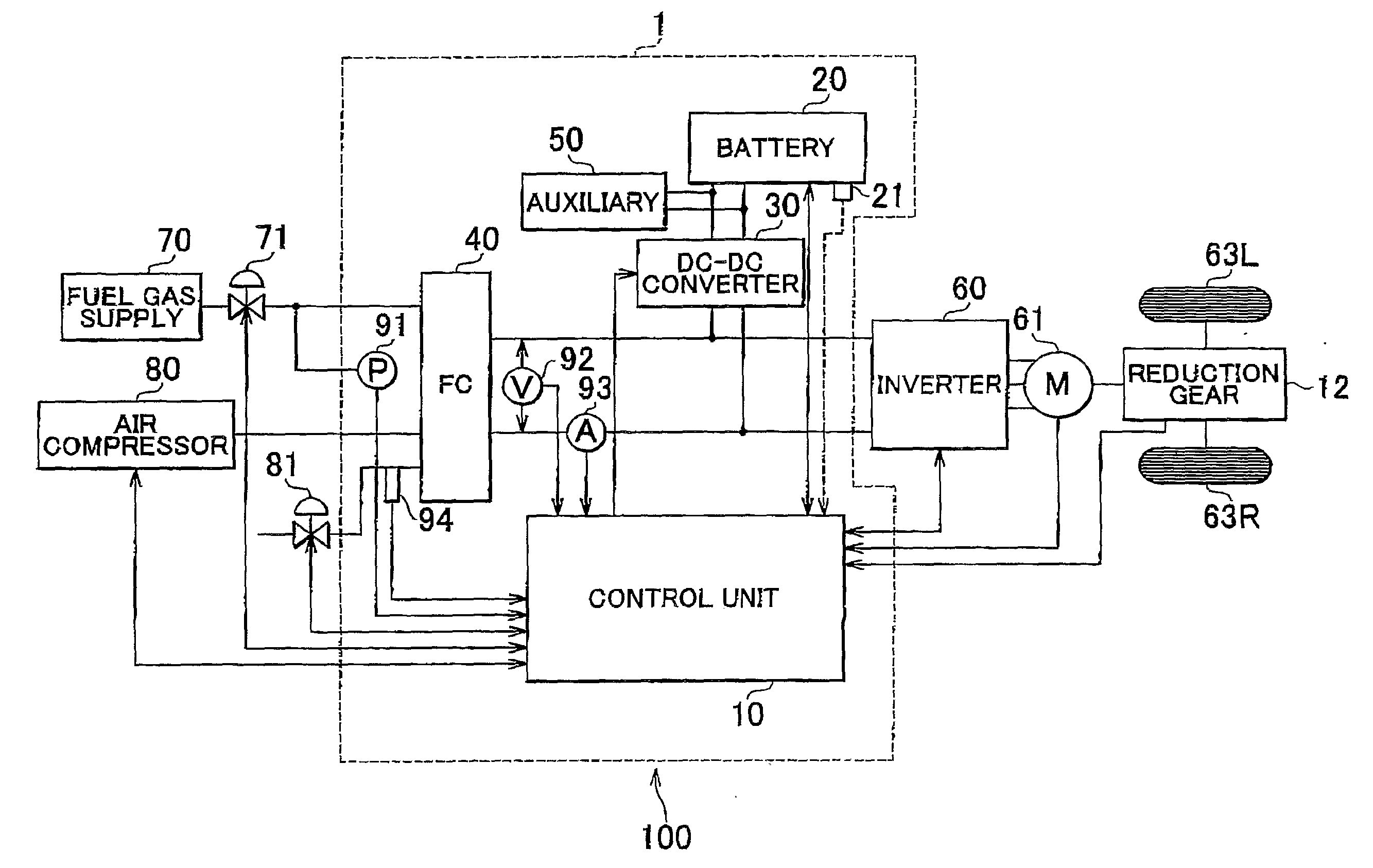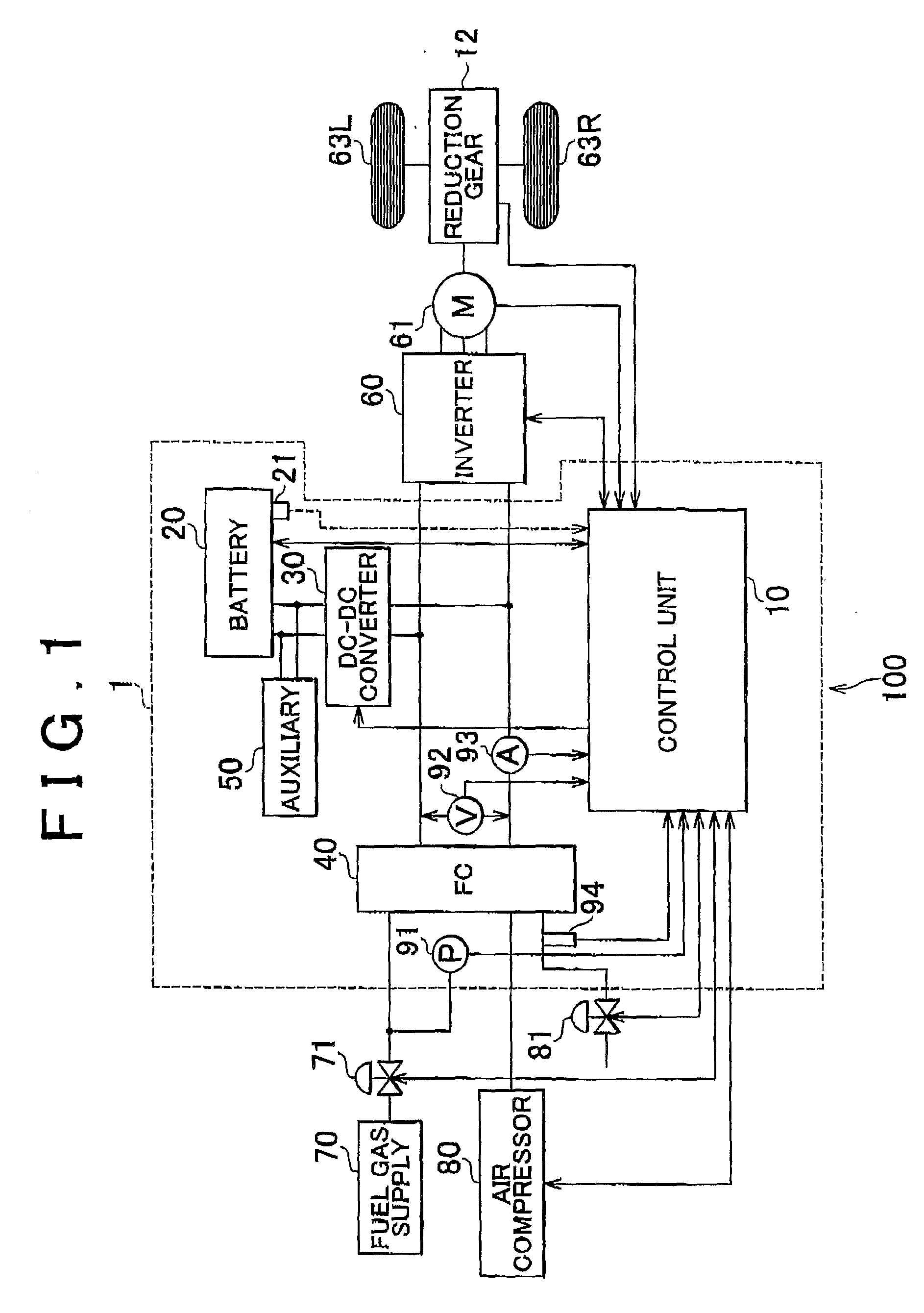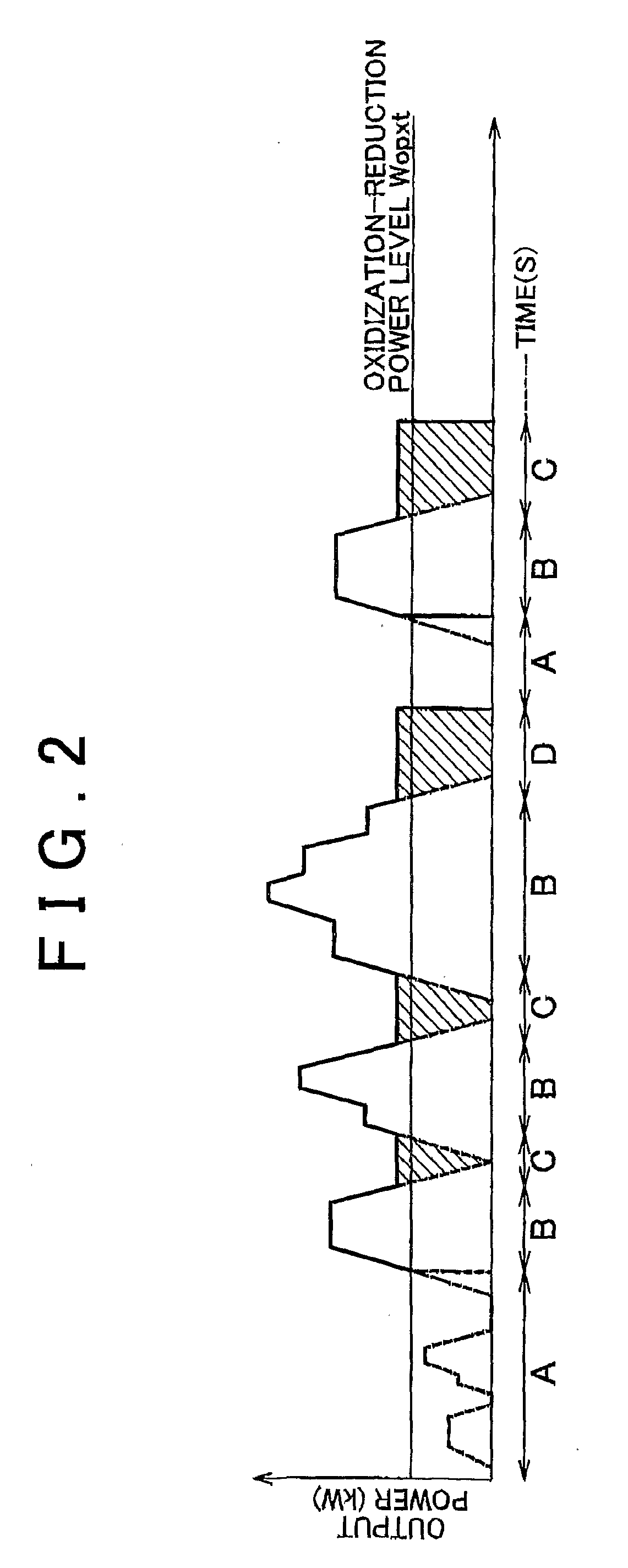Fuel cell apparatus, vehicle including the fuel cell apparatus, and power management method for a system equipped with fuel cell unit
a fuel cell and power management technology, applied in battery/fuel cell control arrangement, electrochemical generators, electric devices, etc., can solve the problems of reducing the power generation performance of the fuel cell apparatus, and achieve the effect of minimizing the decrease in the power generation performance of the fuel cell unit and suppressing sintering
- Summary
- Abstract
- Description
- Claims
- Application Information
AI Technical Summary
Benefits of technology
Problems solved by technology
Method used
Image
Examples
first example
[0069]A map MP1 of FIG. 6 illustrates an example where the threshold value β changes according to the number of times that the accelerator is turned on and off, i.e., the frequency of acceleration and deceleration of the fuel cell hybrid car. More specifically, in this example, the control unit 10 counts said frequency over a particular period of time, and changes the threshold value β according to the counted frequency. When it is found that the fuel cell hybrid car has been accelerated and decelerated many times, it is highly likely that, for example, the fuel cell hybrid car will be accelerated again. When only a small number of times, conversely, the likelihood is low.
[0070]In view of this, the map MP1 is formulated such that the threshold value β increases as the foregoing acceleration-deceleration frequency over the particular period of time increases. The map MP1 is stored in a memory, or the like, and is used to to minimize the time that the power generation of the fuel cell...
second example
[0071]A map MP2 of FIG. 7 illustrates an example where the threshold value β changes in accordance with the charge state of the battery 20. Specifically, the control unit 10 obtains an SOC (State-Of-Charge) value indicating the charge state of the battery 20, and changes the threshold value β according to the obtained SOC value. When the SOC value is small, it shows that the battery 20 can store a large amount of excess power. When the SOC value is large, conversely, it shows that the storable amount of excess power is not so large. In view of this, the map MP2 is formulated such that the threshold value β decreases as the SOC value increases. The map MP2 is stored in a memory, or the like, and is used to minimize the time that power generation of the fuel cell unit 40 continues, in order to avoid decreases in the fuel economy and the efficiency of power regeneration from regenerative drive power, and so on.
[0072]Further, if the fuel cell hybrid car, as one of applicable vehicles, i...
third example
[0073]A map MP3 of FIG. 8 illustrates an example where the output voltage Vfc, which is an output voltage of the fuel cell unit 40 during its power generation being limited, changes in accordance with the pH of the cathodes of the fuel cells that is detected by the pH sensor 94 (the output voltage Vfc will hereinafter be referred to as “control voltage Vfc”). This is because the oxidization-reduction potential Voxpt increases as the pH increases to the basic side, and decreases as the pH decreases to the acid side. In view of this, the map MP3 is formulated such that the control voltage Vfc of the fuel cell unit 40 increases as the pH increases. The map MP3 is stored in a memory, or the like, and is used to change the control voltage Vfc in order to more reliably prevent sintering of the Pt catalyst and avoid a decrease in the power generation performance of the fuel cell apparatus.
PUM
| Property | Measurement | Unit |
|---|---|---|
| oxidization-reduction potential | aaaaa | aaaaa |
| power | aaaaa | aaaaa |
| charge state | aaaaa | aaaaa |
Abstract
Description
Claims
Application Information
 Login to View More
Login to View More - R&D
- Intellectual Property
- Life Sciences
- Materials
- Tech Scout
- Unparalleled Data Quality
- Higher Quality Content
- 60% Fewer Hallucinations
Browse by: Latest US Patents, China's latest patents, Technical Efficacy Thesaurus, Application Domain, Technology Topic, Popular Technical Reports.
© 2025 PatSnap. All rights reserved.Legal|Privacy policy|Modern Slavery Act Transparency Statement|Sitemap|About US| Contact US: help@patsnap.com



